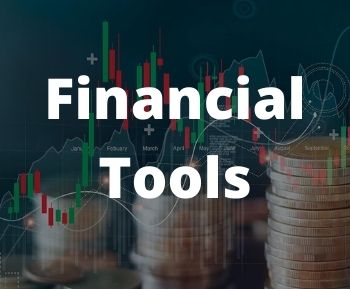Market Overview
Over the past three years, equity markets have delivered returns well above historical averages (6–10%), suggesting that some giveback or consolidation is likely. The Canadian dollar remained stable versus the USD, while bond indexes returned ~4.7% annually. Gold was the standout performer — strong over three years and up ~55% over the past 12 months. Oil struggled, losing ~10% per year for three years and –25% in Q3 2025 alone.
One-Year Performance
Canada led major markets with a +28% one-year return, outpacing both the S&P; 500 and NASDAQ. Europe and Emerging Markets also performed strongly. The US dollar appreciated about 3% year-over-year, mostly during Q3. Interest rates remained low: 1-year GoC bond: 2.4%, 5-year: 2.75%, 10-year: 3.21%, and GICs roughly 1% higher across terms.
Portfolio & Risk Management
The firm focused on risk control, trimming overweight positions above 5%, typically back to 2–3%. Several holdings hit pre-set sell targets, leading to portfolio rebalancing. Capital deployment slowed late in the quarter as markets appeared extended. New client inflows were significant during the summer, contributing to a temporarily higher cash position.
Themes for 2025
U.S. reindustrialization continues to dominate — encompassing both traditional manufacturing and new technology sectors. Valuation gaps between Canada/Europe vs. the U.S. persist (e.g., European software firms still trade at 30–40% discounts). The team monitors low-probability, high-impact risks, such as a sharp rise in interest rates or currency devaluation. These scenarios are unlikely but could meaningfully affect portfolios.
Conclusion
Exponent expects some normalization after a strong multi-year run. Risk management remains the priority while selectively positioning for long-term structural trends like U.S. industrial resurgence. For investors: the message is measured optimism with disciplined caution.
Chart Narration — Q3 2025: Gold, Bitcoin, AI & Market Valuations
Gold Prices: History Repeating Itself
The first chart shows the long-term history of gold prices, going back to the 1960s. Each major price spike — in the late 1970s, around 2011, and now in 2025 — has been followed by a significant multi-year giveback. At the end of August, gold sat just below $3,700 per ounce, closing the quarter near $3,900.
The pattern is clear:
• Rising prices bring new supply, as previously uneconomic mines become profitable.
• New supply eventually suppresses prices, leading to a 30–50% retracement.
In short, gold tends to make some investors look brilliant for a brief period — roughly once every 20 years — but long-term returns are volatile and cyclical.
Bitcoin and the U.S. Dollar
The next chart compares Bitcoin’s parabolic move to the U.S. Dollar Index (DXY). Between 2023 and 2025, Bitcoin rose from just above $20,000 to nearly $120,000 — a six-fold increase.
Some commentators attribute this to a weakening U.S. dollar. However, the DXY shows that while the dollar fell back from its 2022 peak, it remains well within its long-term range — hardly evidence of a currency collapse.
The more likely explanation lies in liquidity and debt expansion:
• Since 2017, the U.S. money supply (M2) has grown 67%.
• Public debt has increased 88%.
• GDP has grown around 60%, much of it debt-driven.
This combination helps explain asset inflation but doesn’t fully justify the speed or magnitude of gold and Bitcoin’s rise.
U.S. vs. Canadian GDP Growth
Another chart contrasts economic growth since 2017. The U.S. economy expanded roughly three times faster than Canada’s, reflecting stronger capital investment and industrial momentum south of the border. Commodity weakness and limited reinvestment have constrained Canadian growth — a theme we’ve seen repeated for several years.
Artificial Intelligence: The New Economic Engine
AI continues to dominate headlines — so much so that the Wall Street Journal now has a dedicated AI section. Our AI ecosystem diagram shows how the sector is structured:
• Infrastructure Layer: data centers and cloud capacity.
• Chipmakers: Nvidia, AMD, Intel — the ‘engines’ of AI.
• Hyperscalers: Microsoft, Oracle, Amazon — hosting, training, and reselling AI capacity.
• Software & Model Layer: OpenAI and other large-language-model developers.
Billions in new investment are flowing through this interconnected web. Some studies estimate AI contributed ~2% to U.S. GDP growth annually over the past two years — possibly explaining part of the growth gap with Canada. While some see echoes of the dot-com bubble, these cycles can last for years before reaching equilibrium.
Market Valuations and Technicals
Since the lows of March 2020, the S&P 500 has risen 223%, while the ‘Magnificent Seven’ stocks are up over 700%. Corporate earnings have grown — but only about two-thirds as fast as prices, meaning valuations are higher but not necessarily unsustainable.
A separate chart plots the S&P 500 versus its 200-day moving average. When markets trade 10% above the 200-day line, history shows a 50/50 chance of a correction of 15% or more. This doesn’t signal imminent danger, but it reinforces the need for measured risk management and disciplined portfolio positioning.
Summary
The Q3 2025 charts reveal a market characterized by:
• Momentum in gold and Bitcoin.
• A structurally strong U.S. economy.
• Rapid AI-driven growth.
• Valuations that require vigilance but not panic.
In short: the data tell a story of opportunity with caution — a fitting theme for the quarter.






